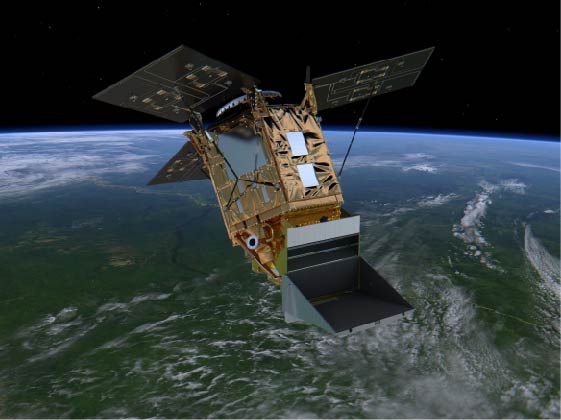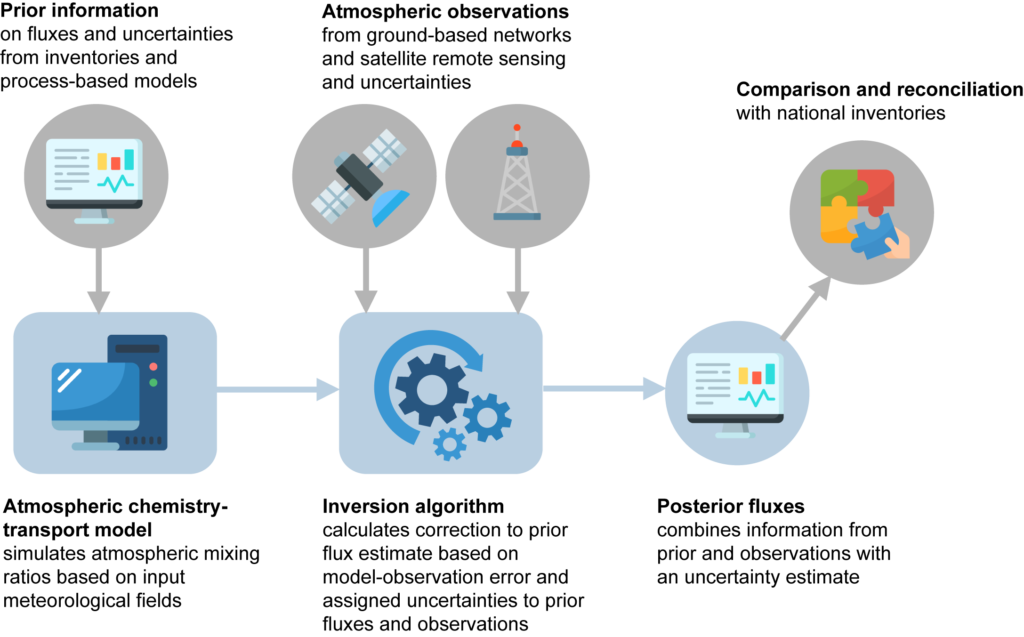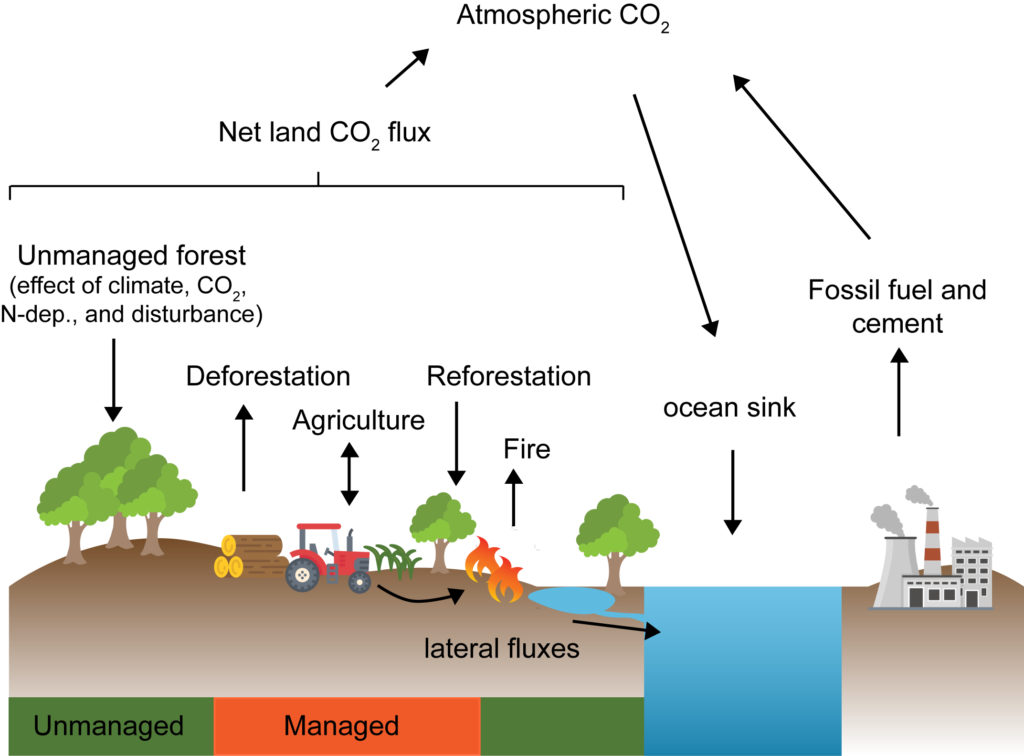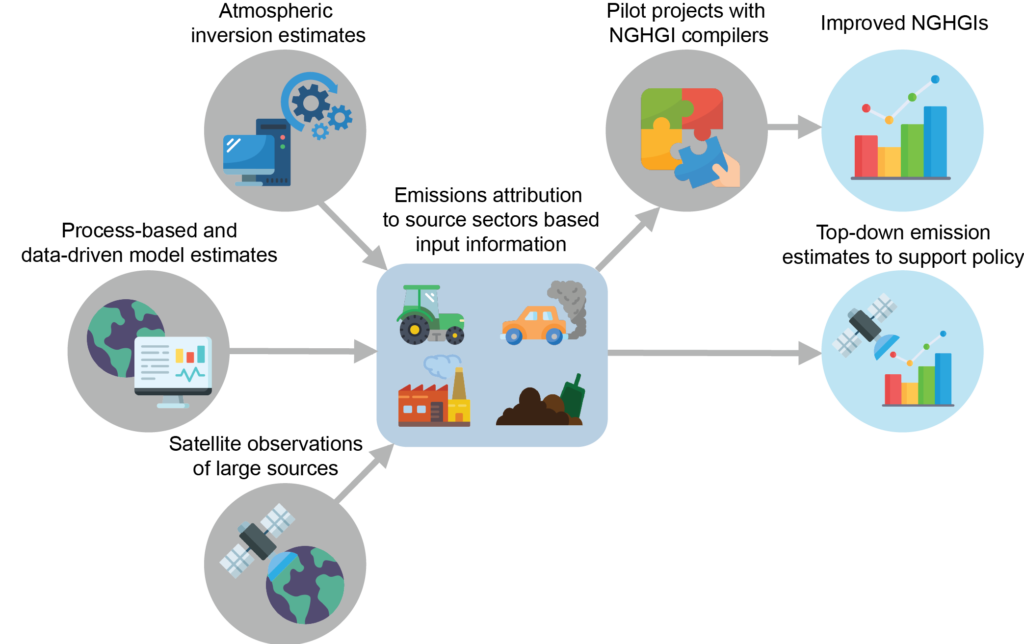
RESEARCH AREAS
Use of high-resolution satellite instruments to determine CH4 emissions
Reducing fugitive emissions from fossil fuel is a very cost-effective way of reducing total CH4 emissions, and a lot can be done to reduce agricultural and land-fill CH4 emissions as well. EYE-CLIMA will develop methods to support monitoring of fossil fuel and other point emissions of CH4.

Atmospheric inverse modelling
Atmospheric inversion is a particularly important part of the methodology and will likely play an increasingly important role in the future as observation-based methods for emissions estimation and verification become more in demand and used. EYE-CLIMA will have a strong focus on improving both the accuracy and resolution of regional inversions.

Land-use emissions and removals
Land-use land-use change and forestry (LULUCF) emissions and removals of CO2 have large uncertainties due to their reliance on sparse observations, as well as due to the lack of accounting for natural effects. EYE-CLIMA will improve LULUCF estimates using approaches based on observations with wide temporal and spatial coverage, namely new satellite remote sensing of the land biosphere and atmospheric CO2 mixing ratios.

Process-based modelling of GHG fluxes
EYE-CLIMA will employ state-of-the-art process-based ecosystem models to further the understanding of the impacts of specific land management practices (e.g. fertilizer application, fallow periods between crop rotations, grazing intensity, forest age structure and thinning intensity) on CO2, CH4 and N2O fluxes from agro-systems.

Emissions of black carbon
Black carbon (BC) has a positive direct radiative forcing and thus contributes to global warming. However, the extent of its impact is highly uncertain – spanning an order of magnitude and is likely to be as important as that of N2O. Part of this uncertainty is due to the uncertainty in BC emissions. EYE-CLIMA will estimate BC emissions from atmospheric observations using inverse modelling.

Informing emission inventories using observations
Methods for reporting national GHG emissions to the UNFCCC are based on emission factors and activity data. However, these methods have uncertainties especially for non-CO2 GHGs, and for CO2 emissions and removals from LULUCF. Thus, independent verification of the emissions needs to be provided. EYE-CLIMA will rigorously examine how atmospheric-inversion based flux estimates can be used to support national emission inventories.

